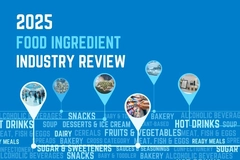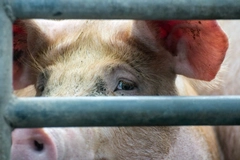
- Industry news
Industry news
- Category news
Category news
- Reports
- Key trends
- Multimedia
- Journal
- Events
- Suppliers
- Home
- Industry news
Industry news
- Category news
Category news
- Reports
- Key trends
- Multimedia
- Events
- Suppliers
Olam boosts sustainable coffee strategy with pledge to cut GHG by 15%

15 Oct 2020 --- Olam Coffee has unveiled its strategy for the future of its coffee sourcing which includes a 15 percent reduction of greenhouse gas (GHG) by 2025.
Leveraging its sustainability insights platform, AtSource, the company is tracking impact through more than 100 economic, social and environmental metrics.
To date approximately US$25 million has been committed by Olam Coffee, customers and partners to its 27 active sustainability projects, of which 31 percent is from Olam alone.
“Within a year of enrolling on AtSource and every third year thereafter, self-assessment, action planning, traceability and data integrity processes are evaluated through third party verification. Second party verification takes place every other year,” Juan Antonio Rivas, senior vice-president of coffee sustainability at Olam Food Ingredients, tells FoodIngredientsFirst.

.jpeg) Olam oversees 60,000 coffee farmers in Africa, Asia and South America.Coffee LENS – “Livelihoods, Education and Nature at Scale” – outlines the company’s first formal sustainability targets for 2025 across its global, direct coffee supply chain, covering 18 origins and a sourcing network of an estimated 424,000 farmers.
Olam oversees 60,000 coffee farmers in Africa, Asia and South America.Coffee LENS – “Livelihoods, Education and Nature at Scale” – outlines the company’s first formal sustainability targets for 2025 across its global, direct coffee supply chain, covering 18 origins and a sourcing network of an estimated 424,000 farmers.
“The targets are certainly ambitious and present specific challenges if taken individually, but acted on holistically, they are very much inter-connected. Progressing on one will certainly contribute to the other,” says Rivas.
“To select a particularly challenging target, reducing the GHG emission intensity in our supply chains by 15 percent is probably the most complex,” he remarks.
“Again, it requires a more holistic approach – in many producing origins, reducing GHG emissions can only be achieved by incentivizing smallholder farmers to adopt climate-smart production and processing practices, mainly through supporting crop productivity and incomes.”
Olam’s coffee goals
Aligned with the UN’s Sustainable Development Goals (SDGs), Coffee LENS focuses on four priority areas to improve economic opportunity, education and skills, climate action and ecosystems in the coffee sector, with the following goals:
- 200,000 households benefiting from improved productivity and incomes.
- All children of coffee farmers in Olam’s supply chain have access to education and young people are engaged in vocational training.
- GHG emission intensity from Olam Coffee’s global footprint is reduced by 15 percent.
- All Olam’s coffee supply chains are deforestation-free with improved soil health and biodiversity at landscape level.
“We have monitoring procedures in place to evaluate the effectiveness of these programmes, the levels of engagement and how mindsets evolve,” Rivas tells FoodIngredientsFirst.
“We can’t guarantee that all 10,000 young adults will take up coffee farming as a career, but through supporting children of coffee farmers, our aim is to create opportunities that their parents may not have had, whether in coffee farming or other agricultural activities.”
Through its program, Olam will also be assessing the reasons behind why such paths may not be pursued.
“Olam already works with several organisations in this capacity, and we hope the launch of our Coffee LENS strategy will generate curiosity and interest amongst our partners and other institutions willing to get involved and share their expertise with us.
The strategy will be achieved through collaboration with partners – customers, governments, financial institutions, multilateral agencies and NGOs.
Broad oversight
In total, Olam oversees 60,000 coffee farmers in Africa, Asia and South America.
“While the coffee supply chain is highly fragmented making direct access to farmers difficult, our sustainability ambitions have grown each year, promoting the importance of traceability, quality, profitable farmers and living landscapes,” comments Vivek Verma, Managing Director and CEO, Olam Coffee.
“Despite our collective efforts however, many of the complex challenges in coffee remain and are now compounded by COVID-19 imposed restrictions to markets and skilled labour squeezing incomes further,” she adds.
“Through dynamic alliances and tools such as our insights platform AtSource and buying app Olam Direct, we aim to deliver these targets by 2025, creating visible and scalable impact. As a result, we will then be able to expand those targets further, re-imagining the future of coffee.”
Consumers increasingly expect companies to invest in sustainability. “The Sustain Domain” was pegged as Innova Market Insights’ third Top Trend for 2020 earlier this year.
By Benjamin Ferrer










